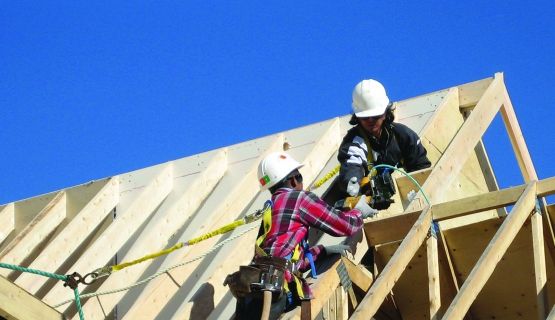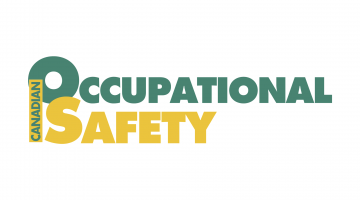Health and safety training
IWH research on occupational health and safety (OHS) training focuses on its effectiveness—from the effectiveness of delivery methods and contents to the effectiveness of training programs overall. OHS training, mandated by workplace health and safety laws in jurisdictions across Canada and beyond, is considered an important part of managing workplace hazards and risks. Such training may involve instruction on identifying occupational risks and how to control them, learning about safe workplace practices and how to properly use personal protective equipment.
Featured

Research Highlights
In-person or online: Does it make a difference for OHS training?
Online formats for occupational health and safety (OHS) training have gained popularity in recent years, especially since the COVID-19 pandemic. But are they as effective as in-person training?
Published: April 4, 2025

Impact case study
IWH evaluation of the effectiveness of the Ontario working-at-heights training standard
An IWH study on the effectiveness of Ontario's mandatory training was valuable to the labour ministry in several ways—including in reinforcing the value of program evaluations.
Published: November 21, 2023

IWH in the media
New immigrants vulnerable to workplace accidents
New arrivals in Canada face additional vulnerabilities on the job, according to studies by Institute for Work and Health (IWH) in Toronto, writes Ian Harvey.
Published: Daily Commercial News, January 2018

Impact case study
Concerns about newcomers’ safety at work lead organizations to IWH toolkit
Organizations working with recent immigrants are incorporating parts of the Institute's toolkit for teaching newcomers about workplace health and safety into their programming. Organizations in Ontario, Alberta, Northwest Territories and Nunavut, and even as far away as Australia, say the resource is just what they were looking for.
Published: December 2017

IWH in the media
Ontario plans to review Working at Heights training
“Working at heights is one of the most dangerous types of work in the construction sector,” says Dr. Cameron Mustard, president and senior scientist, Institute for Work & Health, in an article on Ontario's plans to review working-at-heights training standards. “By working with stakeholders to evaluate the WAH standards, we will help ensure construction workers are protected on the job and will return home safely at the end of each workday.”
Published: Equipment Journal, December 2017
IWH Speaker Series
IWH Speaker Series
Addressing essential skills gaps in an OHS training program: a pilot study
Can an occupational health and safety (OHS) training program be improved by modifying it to address gaps in essential skills? In a recent study, a research team led by Dr. Ron Saunders modified a hoisting and rigging training program offered by the LIUNA Local 506 training centre. The changes were made to address trainees’ skills gaps in numeracy and document use that were related to the job. In this plenary, the team share findings regarding the effect of modifying the curriculum on trainee learning and discuss suggestions for improving training efforts within the construction sector.
Published: November 2017

At Work article
IWH study examines effect of Ontario’s mandatory OHS training on awareness
On July 1, 2014, a new occupational health and safety requirement took effect in Ontario. An IWH research team conducted a study on differences in OHS awareness before and after the requirement took effect. Read about the findings.
Published: November 2017

IWH in the media
Recent immigrants, refugees largely unaware of OHS: Researchers
When immigrants and refugees come to Canada, they are handed a 140-page document that contains only one small paragraph about employee rights. Unfortunately, this might be the only OHS exposure these workers receive, writes Amanda Silliker, reporting on an Institute for Work & Health research project.
Published: Canadian Occupational Safety, November 2017
IWH Speaker Series
IWH Speaker Series
Evaluating the impact of mandatory awareness training in Ontario
In this presentation, Dr. Peter Smith shares the results of a study that examined differences in the level of self-reported occupational health and safety (OHS) awareness and empowerment among employed workers in Ontario before and after the introduction of the mandatory OHS training. He also discusses the implications of the results for future province-wide initiatives focusing on the primary prevention of work-related injuries and illnesses.
Published: April 2017
Project
Project
Evaluating the implementation and effectiveness of Ontario’s working-at-heights training standard
IWH researchers are examining the effectiveness of Ontario’s mandatory working-at-heights training standard and what is being learned about its implementation in construction workplaces.
Status: Completed
Project
Project
Information and resource needs of newcomers to help ensure their safe integration into the labour market
This project looked at the needs of recent immigrants and refugees to Ontario to help ensure they can safely integrate into the Canadian labour market.
Status: Completed 2017
Project
Project
Addressing literacy and numeracy gaps among workers in an OHS training program: a pilot study
Can we improve occupational health and safety (OHS) outcomes by embedding literacy and numeracy into OHS training? IWH researchers aimed to find out, by assessing a hoisting and rigging program that embeds these essential skills into the training.
Status: Completed 2017